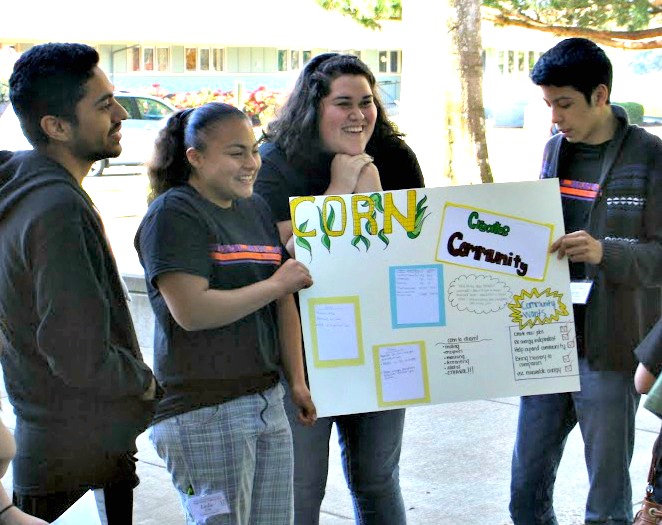By Betsy Fradd, Washington State University
June 2015
Solving future bioenergy needs in Oregon may be a little easier thanks to the innovative efforts of a large group of teenagers concerned about the environment.
Over 100 high school students took part in this year’s Oregon State University (OSU) Science & Math Investigative Learning Experience (SMILE) Program Bioenergy Challenge where they were tasked with learning different types of bioenergy based on four hypothetical communities similar to those in the state.
In mock scenarios, student teams were “hired” by an investment firm which had selected communities to support bioenergy production. Using survey data and information about the locales, students informed financiers on which type of bioenergy would be a mutually beneficial investment for their company and the community.

“Students are critically thinking about the data and making scientific decisions,” said Jay Well, Coordinator of OSU’s SMILE program. “They are learning about the perceived impacts of bioenergy including sustainability, job creation, environmental concerns, and national energy independence.”
As one of the educational components of the Advanced Hardwood Biofuels Northwest (AHB) consortium, SMILE and the two-day Bioenergy Challenge help rural, low-income, and minority students think about their future in a STEM career and acquaint them with college life.
OSU senior Jorge Miranda was one of thirteen Bioenergy Challenge mentors. His involvement in the SMILE program since middle school helped open educational doors and future opportunities. “As a first generation student, I had little idea of how to apply to college and how to go about funding my education, so I wanted to encourage others to not settle for less than a higher education simply because they do not know the means of getting there,” said Miranda. “It is very likely that in [the students’] lifetime there may be a shortage of non-renewable energy sources. Being able to apply what they learned to an existing problem illustrates the impact a college education can have on the world and in their own lives if they choose to pursue a bioenergy-related career.”
Student teams created five-minute persuasive presentations where they included the types of bioenergy that would be best for a community investment and explained what investors would need to do to gain community support. The students also designed an educational pamphlet and poster providing survey data and region specific biofuel information, which were also presented to their hypothetical investment firm.


Preparation work done in students’ high school SMILE clubs provided beneficial insight into local issues. Forest Grove instructor and club advisor Tonya Jones oversaw a student-conducted bioenergy community survey, provided biofuel-specific instruction, and facilitated a visit to a biofuel algae lab. “Biofuels and alternative energy will be nothing but bigger in the future,” said Jones. “Students need to understand what it is and how they will use it. The Challenge program is creating new innovators and informed citizens, and it is showing students career paths available.”
